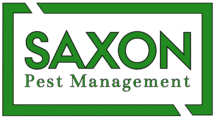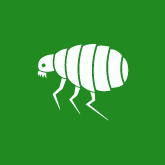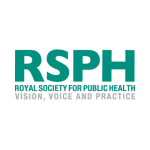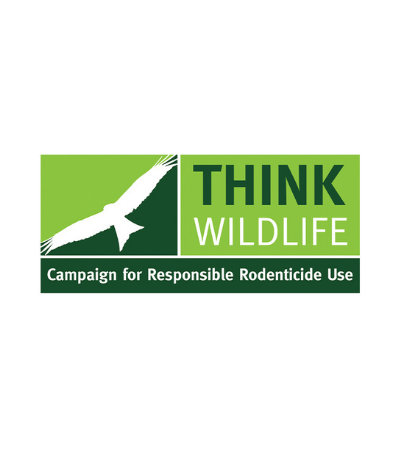Upminster’s green spaces and charming neighborhoods are beautiful but can also attract unwanted pests. From ants to squirrels, these common household invaders can cause health issues and property damage. Early identification and action are key. This guide helps you spot these pests early and understand what draws them to your home.
What Are the Most Common Pests in Upminster?
Upminster’s suburban environment, with its mix of older homes and green spaces, creates ideal conditions for several pest species. The most frequently encountered household pests include rodents like mice and rats, bed bugs, cockroaches, various ant species, and squirrels.
Rodents top the list of pest complaints in Upminster. The area’s Victorian and Edwardian housing stock often provides numerous entry points, while nearby parks and gardens offer abundant food sources. Both house mice and brown rats commonly invade homes, particularly during colder months when they seek warmth and shelter. In 2024, UK councils made 291,132 visits for pest infestations, with 91% addressing rodent issues.
Bed bugs have seen a resurgence in recent years, affecting homes across all income levels in Upminster. These persistent parasites hitchhike on luggage, clothing, and second-hand furniture, making any household vulnerable regardless of cleanliness standards. Between 2022 and 2024, bed bug infestations in the UK increased by 35%.
Cockroaches, particularly the German cockroach, thrive in Upminster’s older properties where warmth and moisture create perfect breeding conditions. These resilient pests multiply rapidly and pose significant health risks to residents. In fact, the removal of cockroaches rose by 13% in the UK from 2022 to 2024.
Ants represent another common nuisance, with garden ants being the primary culprits. They exploit even the smallest cracks and crevices to access homes, drawn by food sources and moisture.
Squirrels cause increasing problems in Upminster, where mature trees provide easy access to roof spaces. These agile creatures can cause considerable damage to loft insulation, wiring, and stored items.
| Pests | Statistics |
| Rodents (Mice & Rats) | In 2024, UK councils made 291,132 visits for pest infestations, 91% for rodent issues |
| Bed Bugs | Bed bug infestations increased by 35% between 2022-2024 |
| Cockroaches | Cockroach removal increased by 13% in the UK from 2022 to 2024 |
| Ants | Ants are among the most common pests found in UK households, especially during Spring and Autumn |
| Squirrels | Squirrel infestations cause structural damage and electrical hazards, with increasing numbers in urban areas |
How Can You Identify a Rodent Infestation in Your Home?
Recognizing rodent activity early prevents minor issues from becoming major infestations. Several telltale signs indicate mice or rats have moved into your Upminster home.
Droppings provide the most obvious evidence. Mouse droppings measure about 3-6mm long and appear dark brown or black, often found along walls, in cupboards, or near food sources. Rat droppings are larger, typically 12-18mm long, and have blunt ends.
Gnaw marks reveal rodent activity on wood, plastic, and even soft metals. Fresh gnaw marks appear lighter in color, while older marks darken with time. Check around food packaging, furniture legs, and door frames for these distinctive marks.
Sounds often betray rodent presence, especially at night when these nocturnal creatures become active. Listen for scratching, scurrying, or squeaking sounds in walls, ceilings, or under floorboards.
Grease marks or “rub marks” appear along frequently used rodent pathways. These dark, oily stains develop where fur repeatedly brushes against surfaces, particularly noticeable along baseboards and around entry points.
Nests constructed from shredded materials like paper, fabric, or insulation indicate established rodent populations. Look for these in quiet, undisturbed areas such as behind appliances, in storage boxes, or within wall cavities.
Unusual pet behavior can also signal rodent presence. Dogs and cats may become excited or focused on specific areas where rodents are active, even when you cannot detect obvious signs.

What Attracts Bed Bugs to Upminster Homes?
Contrary to popular belief, bed bugs are not attracted to dirty homes. These parasitic insects seek human blood and carbon dioxide, making any occupied dwelling a potential target regardless of cleanliness levels.
Travel represents the primary way bed bugs enter Upminster homes. These hitchhiking pests readily climb into suitcases, backpacks, or clothing at hotels, airports, or public transport. Business travelers and holiday-goers unknowingly transport them home, where they quickly establish new infestations.
Second-hand furniture poses another significant risk. Bed bugs hide in mattresses, sofas, bed frames, and even clothing purchased from charity shops or online marketplaces. Always inspect used items carefully before bringing them into your home.
Visiting friends or family can inadvertently introduce bed bugs. These insects easily transfer between residences on clothing, bags, or personal belongings, spreading from infested properties to clean homes.
Shared housing situations in Upminster, including university accommodation or house shares, facilitate bed bug transmission. High tenant turnover and shared common areas increase exposure risks significantly.
Temperature preferences influence bed bug behavior. They thrive in consistently warm environments between 18-24°C, making heated Upminster homes particularly attractive during winter months.
Why Are Cockroaches a Health Concern in Upminster Households?
Cockroaches represent serious health threats beyond their unsettling appearance. These disease-carrying pests contaminate food surfaces, spread harmful bacteria, and trigger respiratory problems in sensitive individuals.
Disease transmission occurs when cockroaches crawl across contaminated surfaces before touching food, utensils, or preparation areas. They carry numerous pathogens including Salmonella, E. coli, and Staphylococcus bacteria, which cause food poisoning and gastroenteritis.
Asthma and allergies worsen due to cockroach allergens found in their droppings, shed skins, and saliva. Children living in cockroach-infested homes show higher rates of asthma development and more severe symptoms.
Food contamination represents an immediate health risk. Cockroaches feed on virtually anything, from garbage to pet food, transferring harmful microorganisms to human food sources through direct contact or contaminated droppings.
Rapid reproduction amplifies health risks quickly. A single German cockroach female can produce up to 400 offspring annually, meaning small problems escalate rapidly into major health hazards.
Persistent presence makes cockroach infestations particularly dangerous. These hardy insects survive in extremely challenging conditions, maintaining disease risks even when other pests cannot establish themselves.
How Do Ants Enter and Infest Homes in Upminster?
Ants exploit remarkably small entry points to access Upminster homes, following invisible scent trails that lead entire colonies to food sources. Understanding their entry methods helps homeowners implement effective prevention strategies.
Structural gaps provide primary access routes. Ants squeeze through cracks around windows, doors, pipes, and utility lines. Even hairline fractures in foundations or mortar joints allow entry for these persistent insects.
Scent trails guide subsequent ant invasions. When scout ants locate food sources, they leave pheromone trails directing other colony members to the same location. These chemical signals remain active for extended periods, ensuring continued ant traffic.
Seasonal patterns influence ant behavior in Upminster. Spring emergence sees increased activity as colonies expand and search for new food sources. Autumn drives ants indoors seeking warmth and shelter for winter survival.
Food attraction motivates ant invasions. Sweet substances, greasy foods, pet food, and even moisture draw ant attention. Kitchen crumbs, sticky spills, and improperly stored food create irresistible attractions for foraging ants.
Moisture sources support ant colonies. Leaky pipes, condensation, or poor drainage around foundations provide essential water supplies that enable ants to establish permanent indoor populations.
What Are the Risks of Squirrel Infestations in Attics?
Squirrel invasions pose unique challenges for Upminster homeowners, combining property damage with potential health risks. These agile creatures view loft spaces as ideal nesting sites, especially during breeding seasons.
Structural damage occurs when squirrels gnaw through wooden beams, roof materials, and support structures. Their powerful teeth continuously grow, requiring constant gnawing that can compromise building integrity over time.
Electrical hazards develop when squirrels chew through wiring systems. This behavior creates fire risks and expensive repair bills, as damaged cables often require complete replacement rather than simple patching.
Insulation destruction reduces energy efficiency and increases heating costs. Squirrels shred insulation materials for nesting, compacting remaining materials and creating thermal bridges that allow heat loss.
Contamination issues arise from squirrel droppings and urine, which accumulate in confined attic spaces. These waste products harbor parasites and bacteria that pose health risks when disturbed during cleaning or maintenance activities.
Noise disturbance affects household comfort, particularly during early morning and evening hours when squirrels are most active. Scratching, running, and chattering sounds can be extremely disruptive to sleep patterns.
Secondary infestations may follow squirrel problems. Fleas, mites, and other parasites often accompany squirrel populations, creating additional pest control challenges even after the squirrels are removed.
How Can You Prevent Pests from Entering Your Home in Upminster?
Effective pest prevention requires a comprehensive approach combining exclusion techniques, sanitation practices, and environmental modifications. Proactive measures cost significantly less than reactive pest control treatments.
Seal entry points using appropriate materials for different gaps. Caulk works well for small cracks around windows and doors, while steel wool effectively blocks larger openings that rodents might exploit. Replace damaged weatherstripping and repair torn screens promptly.
Maintain cleanliness consistently throughout your home. Store food in sealed containers, clean spills immediately, and avoid leaving pet food out overnight. Regular vacuuming removes crumbs and food particles that attract pests.
Eliminate moisture sources by fixing leaky pipes, improving ventilation, and addressing drainage problems around your property. Use dehumidifiers in damp areas and ensure gutters direct water away from foundations.
Landscape management reduces pest harborage around your Upminster home. Trim shrubs and tree branches away from building exteriors, remove wood piles and debris, and maintain grass at appropriate lengths.
Regular inspections help identify problems before they become infestations. Check storage areas, basements, and attics monthly for pest signs. Pay attention to areas where utilities enter your home, as these common entry points require ongoing maintenance.
Professional monitoring provides expert assessment of pest risks specific to your property. Qualified pest control professionals can identify vulnerabilities and recommend targeted prevention strategies based on local pest pressures and seasonal patterns.
Protecting Your Upminster Home from Unwanted Guests
Successfully managing household pests requires vigilance, knowledge, and swift action when problems arise. The common pests found in Upminster homes from rodents and bed bugs to cockroaches, ants, and squirrels each present unique challenges that demand specific approaches.
Regular home maintenance, proper sanitation, and prompt attention to warning signs form the foundation of effective pest management. When prevention efforts fall short, professional pest control services provide specialized expertise to eliminate established infestations and prevent recurrence.
Remember that early intervention typically costs less and causes less disruption than dealing with advanced infestations. Stay alert to the warning signs discussed here, and don’t hesitate to seek professional help when needed. Your Upminster home should remain a comfortable sanctuary for your family, not a haven for unwanted pests.






















